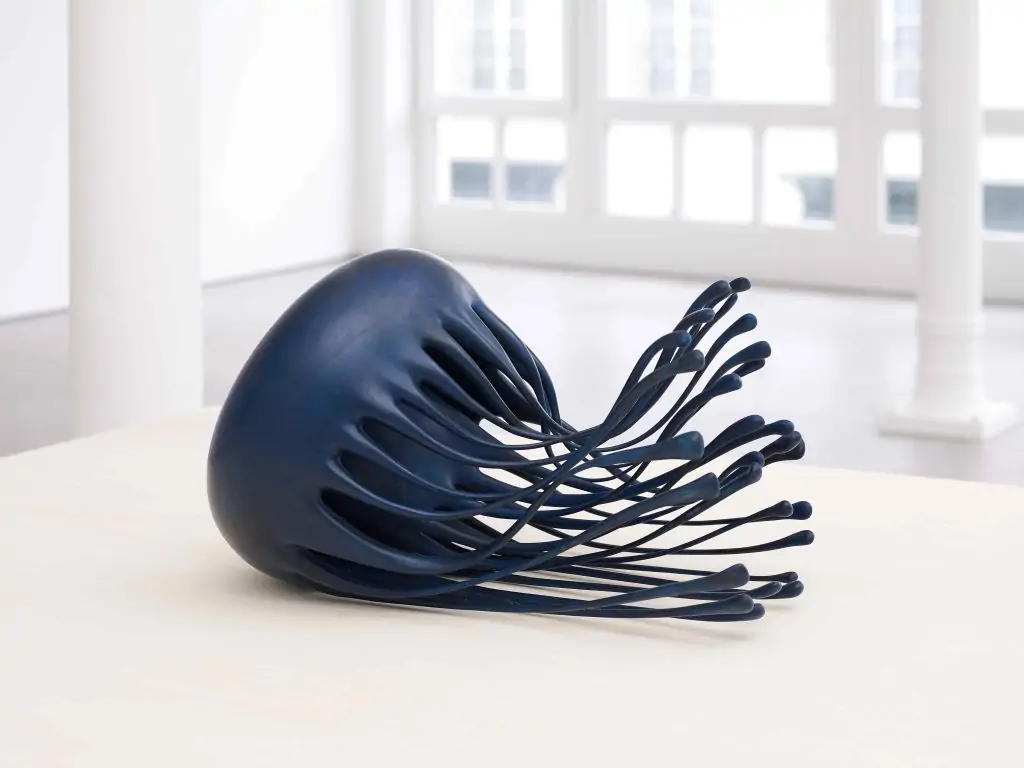When Forms Come Alive: Sixty Years of Restless Sculpture
7th February – 6th May 2024
Hayward Gallery, Southbank Centre, Belvedere Road, London SE1 8XX
Full price standard: £18
Concessions available & Southbank Centre Members go free
The Hayward Gallery will present When Forms Come Alive, a playful and lively exhibition highlighting the ways in which artists have been inspired by movement, flux and organic growth, from a dancer’s gesture to the breaking of a wave, or from a flow of molten metal to the interlacing of a spider’s web.
Spanning over 60 years of contemporary art, this unique exhibition will include a range of energetic sculptural forms that seem to ooze, undulate, blossom, erupt and sprawl in the gallery space, inspiring fluid and shifting realms of experience that will surprise viewers at every turn. When Forms Come Alive will bring together works that engage in a dynamic and urgent exploration of physical experience in contrast to a world in which everyday encounters are increasingly digitised.

228.6 x 179.4 x 172.2 cm
© Lynda Benglis. Courtesy the artist, Pace Gallery and Thomas Dane Gallery. Photo: Davin Lavikka/Pace Gallery.
The exhibition will feature the works of 21 international artists, namely Ruth Asawa, Nairy Baghramian, Phyllida Barlow, Lynda Benglis, Michel Blazy, Paloma Bosquê, Olaf Brzeski, Choi Jeonghwa, Tara Donovan, DRIFT, Eva Fàbregas, Holly Hendry, EJ Hill, Marguerite Humeau, Jean-Luc Moulène, Senga Nengudi, Ernesto Neto, Martin Puryear, Matthew Ronay, Teresa Solar Abboud and Franz West.

© Estate Franz West.
The exhibition will open with sculptures from the 1960s and 1970s by postminimalist and process-oriented artists, including Lynda Benglis and Senga Nengudi, showcasing how form is inseparable from a sense of transience and transformation – an aesthetic developed in pointed contrast to the sleek monolithic structures created by many male artists of the time. Later works from artists such as Phyllida Barlow and Nairy Baghramian pick up on this anti-monumental character, presenting deliberately awkward forms that evoke fleeting states of being, or relationships in flux.
Works from artists Franz West, Olaf Brzeski and Matthew Ronay utilise forms to conjure the abject, comedic and absurd. The unexpected bulges and curves in these sculptures might evoke associations to living organisms from one viewpoint, but when seen from another angle, they suggest geological formations or melting ice cream. Meanwhile, with its neon, rollercoaster-like structure, EJ Hill’s large-scale sculpture triggers memories of radical motion and visceral highs, to which the artist links the politics of Black joy and the historical exclusion of African-Americans from amusement parks in areas of the USA.
Organic life will be a key departure point for many of the artists in the show. Inspired by her observations of natural forms, Ruth Asawa’s wire sculptures made in the 1950s and 1960s nest spherical forms inside hourglass shapes, suspended from the gallery ceiling to enable their subtle motion. Made from silk, DRIFT’s kinetic Shylights mimic the folding and unfolding of flowers that close at night, whilst Marguerite Humeau’s multimedia sculptures echo the gills of mushrooms and honeycomb-like structures to conjure scenarios of organic metamorphosis and adaptation.

Greta Meert.
The exhibition will open with sculptures from the 1960s and 1970s by postminimalist and process-oriented artists, including Lynda Benglis and Senga Nengudi, showcasing how form is inseparable from a sense of transience and transformation – an aesthetic developed in pointed contrast to the sleek monolithic structures created by many male artists of the time. Later works from artists such as Phyllida Barlow and Nairy Baghramian pick up on this anti-monumental character, presenting deliberately awkward forms that evoke fleeting states of being, or relationships in flux.

Works from artists Franz West, Olaf Brzeski and Matthew Ronay utilise forms to conjure the abject, comedic and absurd. The unexpected bulges and curves in these sculptures might evoke associations to living organisms from one viewpoint, but when seen from another angle, they suggest geological formations or melting ice cream. Meanwhile, with its neon, rollercoaster-like structure, EJ Hill’s large-scale sculpture triggers memories of radical motion and visceral highs, to which the artist links the politics of Black joy and the historical exclusion of African-Americans from amusement parks in areas of the USA.

The exhibition will be accompanied by a richly illustrated, hardback catalogue that explores the artists and their work in detail. The book will include essays by Hayward Gallery Director Ralph Rugoff and art historian Natalie Rudd which expand on the key themes of the show, citing the artists’ work within the context of postminimalism, and exploring formal and material innovation in sculpture across the past half century. Texts on each artist by a range of writers will accompany a broad-ranging selection of images.
When Forms Come Alive: Sixty Years of Restless Sculpture is curated by Ralph Rugoff with Assistant Curator Katie Guggenheim and Curatorial Assistant Anusha Mistry.
When Forms Come Alive: Sixty Years of Restless Sculpture opens on the 7th of February until the 6th of May 2024 at the Hayward Gallery, Southbank Centre
©2024 The Hayward Gallery





